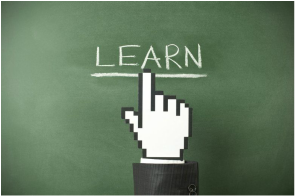
I'm really interested in how digital media can reform our educational system. I love digital media because it is full of creativity and fun things! So why not use it to change our educational system so students can learn better? Thus, the question is: how can computer-mediated communication (CMC) be utilized in educational settings? Whether it is student/teacher interaction or student/student interaction, education has relied on face-to-face (FTF) communication to sustain these interactions. However, as technologies expand and advance, online classes are blooming, and they show a possibility of replacing traditional education. One of the advantages of CMC in online classes would be when Ho and McLeod talked about the “equalization effect” phenomenon (Siegel et al., 1986). People might speak out more in CMC discussions because their status differences are not nearly visible as when they are engaged in FTF discussions. I think people would notice their status differences more today because CMC discussions often happen through using our social media identities. Anyhow, as someone who was very shy in high school days, I also would have preferred CMC discussions back then because I was too intimidated by others to speak up. However, I think this brings up an important self-development issue. Yes, students might talk more online, but in return, they might be missing out on learning social skills they need when they go out into the society. People skills are important when you are meeting new people, and through overcoming obstacles in FTF situations, young people can learn to deal with various people. Don’t get me wrong. I love CMC, but this might be “cop-out” for students. Perhaps, this favorability over CMC discussions can suggest educators that they need to find different ways to encourage those “shy” people to talk in classes.
Another advantage of CMC discussions can be explained through Media Richness Theory. This theory focuses on a medium and how its speed and abilities can transmit messages more effectively. These days, online communication can happen in various ways. People can communicate through avatars (e.g., Second Life), videos (e.g., YouTube), and photos (e.g., Instagram). Because each site has its unique features, people can take advantage of them to creatively communicate their messages. This is perhaps why many current educators are fond over incorporating Twitter to encourage more student interactions with educational materials. Although educators’ efforts to expand their interactions with students online should be applauded, people should develop an actual guidelines and creative curricula to structure these CMC discussions. I feel like educators often “jump on a bandwagon” to incorporate social media into their classrooms because it is trendy. However, just using a YouTube video in classroom lacks creativity. There are so much potential in these media to do more than to create a CMC discussion.
In the end, there are many positive characteristics on using CMC discussions in education. However, we are still too far from replacing CMC discussions to FTF discussions. Therefore, there is a need for more explorations. Perhaps, representative students and educators can come together to think of creative ways on how to blend CMC and FTF communications together to reform our current educational system.
Another advantage of CMC discussions can be explained through Media Richness Theory. This theory focuses on a medium and how its speed and abilities can transmit messages more effectively. These days, online communication can happen in various ways. People can communicate through avatars (e.g., Second Life), videos (e.g., YouTube), and photos (e.g., Instagram). Because each site has its unique features, people can take advantage of them to creatively communicate their messages. This is perhaps why many current educators are fond over incorporating Twitter to encourage more student interactions with educational materials. Although educators’ efforts to expand their interactions with students online should be applauded, people should develop an actual guidelines and creative curricula to structure these CMC discussions. I feel like educators often “jump on a bandwagon” to incorporate social media into their classrooms because it is trendy. However, just using a YouTube video in classroom lacks creativity. There are so much potential in these media to do more than to create a CMC discussion.
In the end, there are many positive characteristics on using CMC discussions in education. However, we are still too far from replacing CMC discussions to FTF discussions. Therefore, there is a need for more explorations. Perhaps, representative students and educators can come together to think of creative ways on how to blend CMC and FTF communications together to reform our current educational system.
